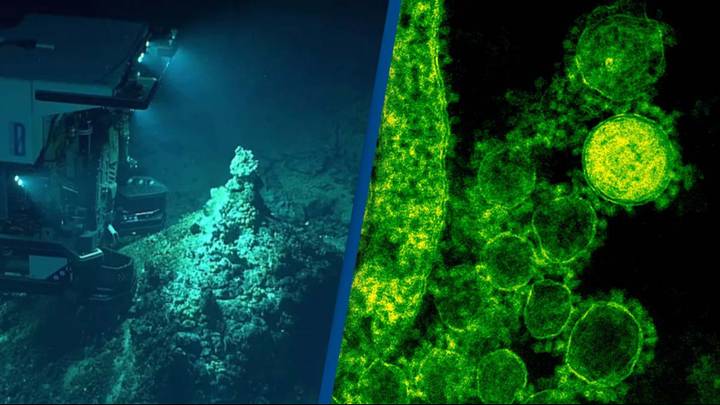Chinese scientists have discovered a new virus at a depth of 8,900 meters in the Mariana Trench. This virus is the deepest virus ever found on Earth.
The newly discovered virus is named vB_Hmey_H4907 and was found at a depth of 8,839 meters in the Mariana Trench. It is a type of bacteriophage (virus that attacks bacteria) that survives by infecting bacteria and then hijacking its body to produce more copies of itself.
“To our knowledge, this is the deepest isolated virus ever found,” said Min Wang, a marine virologist at Ocean University of China and the lead author of the study, as quoted by Live Science.
Parasite in Bacteria
It is also known that this virus infects Halomonas bacteria by inserting its genetic material into the bacteria’s genome and replicating without killing the bacteria. This may be due to the evolution of the virus and the bacteria, so the virus is not able to kill its host.
Halomonas can be found throughout the oceans, including the bottom of the Antarctic Ocean and sediments around deep-sea hydrothermal vents. The researchers analyzed this virus and found that its range is likely to be as wide as the bacteria itself.
Not much is known about viruses in the deepest regions of the ocean. The deepest regions of the ocean with a depth of less than 6,000 meters are also known as the hadal zone, and this newly discovered virus is the third virus known to infect Halomonas bacteria there.
They are Widespread in The Oceans
They are widespread in the oceans and show the prevalence of this virus family in the deep sea. This finding expands our understanding of the phylogenetic diversity and features of hadal lysogenic genomes.
Viruses and bacteria that live at these depths are very foreign to humans. Even human immune cells will not be aware of their existence, making them invisible.
Scientists say the next step is to find more mysterious deep-sea viruses. In addition, it is also investigating how these viruses are related to their less-known host interactions.
The study on the discovery of the virus at the bottom of the Mariana Trench, compiled by Chinese researchers, Min Wang et al., has been published under the title “Identification and genomic analysis of temperate Halomonas bacteriophage vB_HmeY_H4907 from the surface sediment of the Mariana Trench at a depth of 8,900 m” in the journal American Society for Microbiology (ASM) on September 20, 2023.
Implications of the discovery
The discovery of this virus has a number of implications. First, it shows that there is still much that we don’t know about the deep sea. This is a vast and largely unexplored environment, and there are likely many other new and interesting organisms to be discovered.
Second, the discovery of this virus could lead to new insights into the evolution of viruses and bacteria. The fact that this virus is able to survive in such extreme conditions suggests that it has evolved to be very robust. Understanding how this virus has evolved could help us to develop new strategies for fighting viruses in other environments.
Finally, the discovery of this virus could have potential applications for biotechnology. For example, the virus could be used to develop new drugs or vaccines. It could also be used to develop new tools for gene editing or other genetic engineering applications.
Conclusion
The discovery of this virus is a significant scientific breakthrough. It is a reminder that there is still much that we don’t know about the world around us, even in the most extreme environments. The discovery of this virus could lead to new insights into the evolution of viruses and bacteria, and it could also have potential applications for biotechnology.



